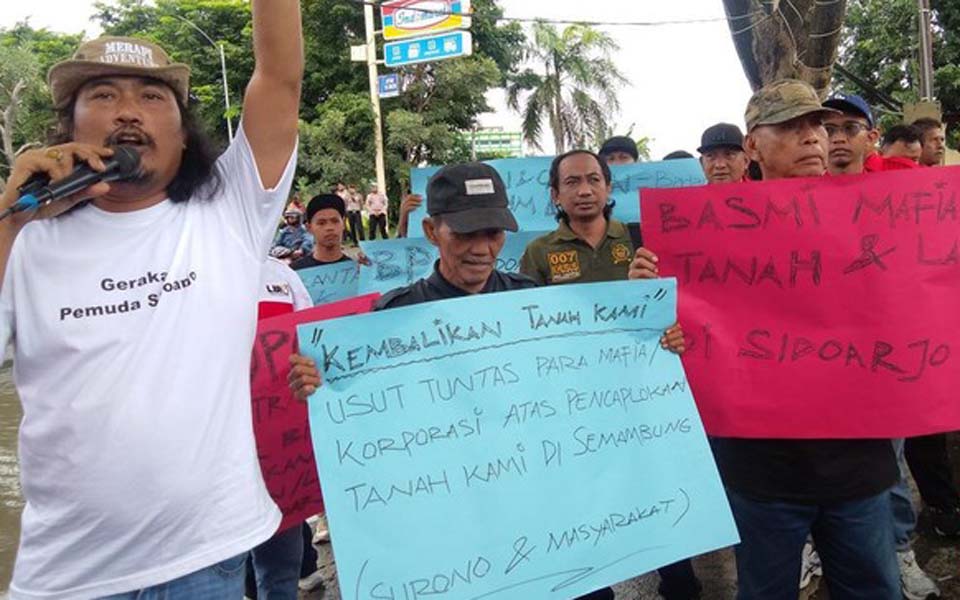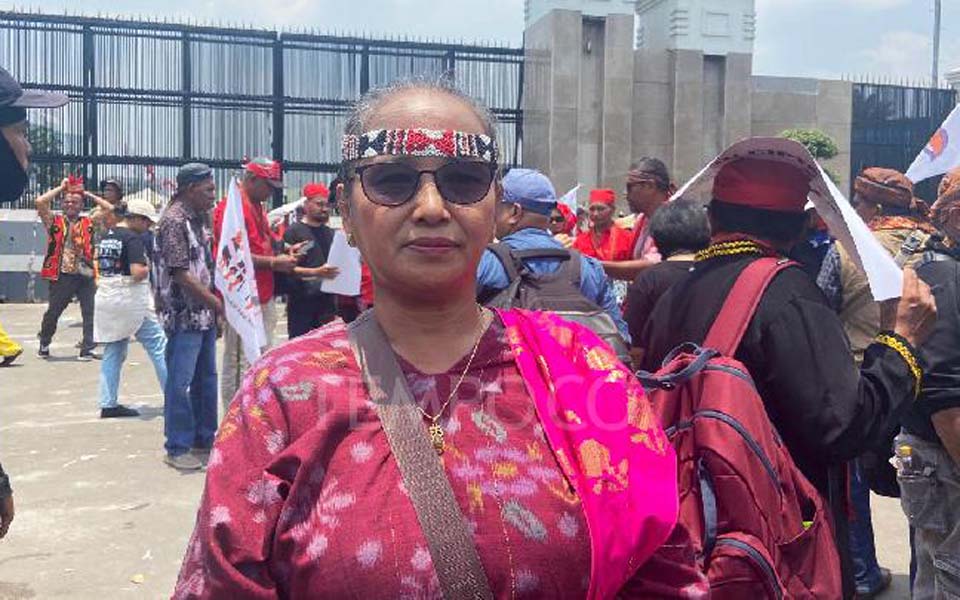Hayamuddin – On September 7 residents and security forces clashed on the island of Rempang, Riau province, after local people attempted to stop the authorities from conducting land measurements and boundary marking for the Eco City development project.
Residents blocked the main road spanning the island using trees and burning tyres as makeshift barricades. Police responded by firing teargas into the crowd with some landing in a nearby school, resulting several children suffering from teargas inhalation. Police detained at least eight demonstrators following the incident.
In 2001 plans emerged to turn Rempang Island into an industrial and tourism area supported by a free trade zone and free port policy as part of the Batam City Industrial Area Development Project, which was awarded to the company PT Makmur Elok Graha (Meg) on May 17 2004.
Prior to this, in 1986 under Forestry Minister Sujarwo, Rempang Island was declared a conservation area but without any consultation or inspection on the ground, so the island was deemed to be uninhabited.
A new policy in 1992 established that Rempang Island, Galang Island and the surrounding islands were to be included in the Batam Island Industrial Region as a Bonded Zone. This reaffirmed the assumption that there were no local communities living on Rempang Island or that they were not of any concern. As a consequence there was no policy for the relocation of local residents or compensation mechanisms.
Following this in 1999, residents of Galang sub-district on Rempang Island were given the opportunity to become part of the administration of the Batam City municipal government, but this still did not resolve the problem because the communities there were still not recognised because as did not have legal claim over land that had occupied for generations.
In late 2022 a meeting was held between the Batam Free Trade Zone Authority (BP Batam) and Rempang residents at the Tg Kertang Bridge Four Village on Rempang Island, at which the BP Batam explained about the planned Rempang Eco City construction project that would be carried out by PT Mega.
The mega project was to be part of the government's so-call agrarian reform program known as TORA (Agrarian Reform Land Object), which would be registered by the government by requesting land right certificates from Galang sub-district residents.
In the second period of the process PT Meg conducted aggressive lobbying with related ministries in order to get support to accelerate the project, which became easier after a decree was issued designating the project as a strategic national project (PSN).
If we go back a few years following the 1965 mass killings that brought Suharto's New Order dictatorship into power, land gabbing had become common in many parts of Indonesia. This was in line with Suharto's move to forge a close relationship with the US imperialist state, which had backed Suharto's seizure of power and the removal of Indonesia's leftist founding president Sukarno.
And of course in order to pay back this debt of gratitude, the US was allowed to force its way deeper into Indonesia's economy though capital exports such as funding development programs in an effort to increase its grip on and in the end be freer to monopolise the economy. By this time land grabs were being carried out though a militaristic approach.
Suharto was overthrown in 1998, but the ideology of developmentalism (pembangunanisme) continued to dominate in Indonesia. In 2004 the World Bank issued a document titled Bad Infrastructure Hampers Indonesia's Economic Growth and Poverty Alleviation Efforts. These kinds of documents are a scenario that is always applied to control Third World countries because with large debts they can be forced to follow programs that have been determined by the imperialist countries. Thus Indonesia is encouraged to pursue infrastructure projects to support the smooth circulation of capital throughout the country.
The implementation of this on the ground began in 2004 during the era of President Susilo Bambang Yudhoyono (SBY) with the Master Plan for the Acceleration and Expansion of Indonesia's Economic Development (MP3EI). Put roughly, the World Bank said that if Indonesia wants to maintain economic stability it must improve the state of its infrastructure.
Since the late 80s Indonesia has adopted the model of public-private partnership schemes (PPP). Under these schemes, infrastructure development is no longer funded by the government but is instead handed over to the private sector or investors. For these investors it becomes a kind of bolu kukus (steamed sponge cake) that is soft and delicious because they can do as they like when investing in Indonesia.
Meanwhile the government's role in facilitating projects is taking responsibility for the acquisition of land, which can be done by means of forced mediation or forced evictions, as was the recent case in Rempang.
The authority of national strategic projects has been further strengthened by the enactment of the widely unpopular Omnibus Law on Job Creation, which provides strong "legal certainty" for the acquisition of land for the benefit of capitalistic projects in Indonesia.
The law also saw the establishment of a Land Bank. In normative terms this institution guarantees the availability of land through the concept of economic fairness for public, social and national development interests, economic equality, land consolidation and agrarian reform.
This however is only on paper. In practical terms, the hidden goal of land banks is to facilitate the process of land acquisition for investment, both in the name of development for the public interest and economic growth, as well as facilitating the process of the privatising state land. Land controlled by the land bank is given the status of the Land Management Rights (HPL).
The implication of this is the privatisation and commercialisation of state land (something prohibited in the 1960s), and the avoidance of corruption in the use of state land, and the strong potential to displace people from their land, who de facto are occupying or living on state land. Thus people can be evicted on legal grounds.
I order to fight the people's oppressors, there needs to be a systematic and organised movement. Starting from educating young people, and this education must also be populist in accordance with the definitions and desires of the people. The ordinary people must build for themselves what they want without interference from the corrupt government.
With that also, when young people understand who the real enemy is that is trampling on and grabbed their parents' necks, and forcibly taking their land, then young people will be two or three steps closer to an organised people's movement.
Then there is a need for solidarity from the working class, students and other elements of the oppressed people in every part of Indonesia so that it can pressure the government to withdraw all military and police forces from Rempang (as well as Wades and other areas where people are threatened with eviction) and provide the rights that should be afforded to the residents of Rempang Island such as land ownership and the right for the indigenous people on Rempang to control, regulate, manage and utilise their customary lands and all natural resources within it.
-- Hayamuddin is a member of the Socialist Study Circle (LSS), which is affiliated with the Socialist Union (Perserikatan Sosialis).
[Translated by James Balowski. Two paragraphs at the beginning of the article were added to provide context for non-Indonesian readers. The original title of the article was "Rempang, Pembangunanisme dan Konsep Ekonomi Politik Rezim Paska Reformasi 1998".]















